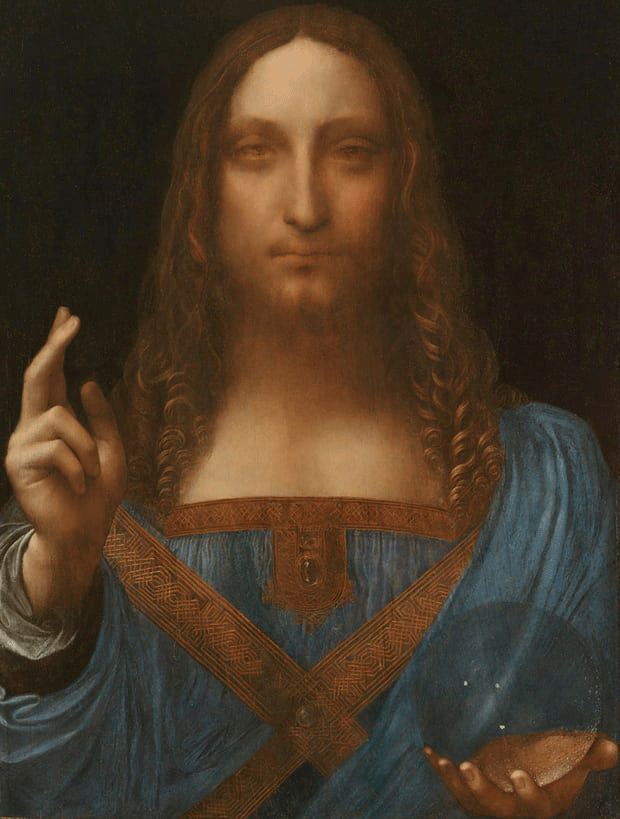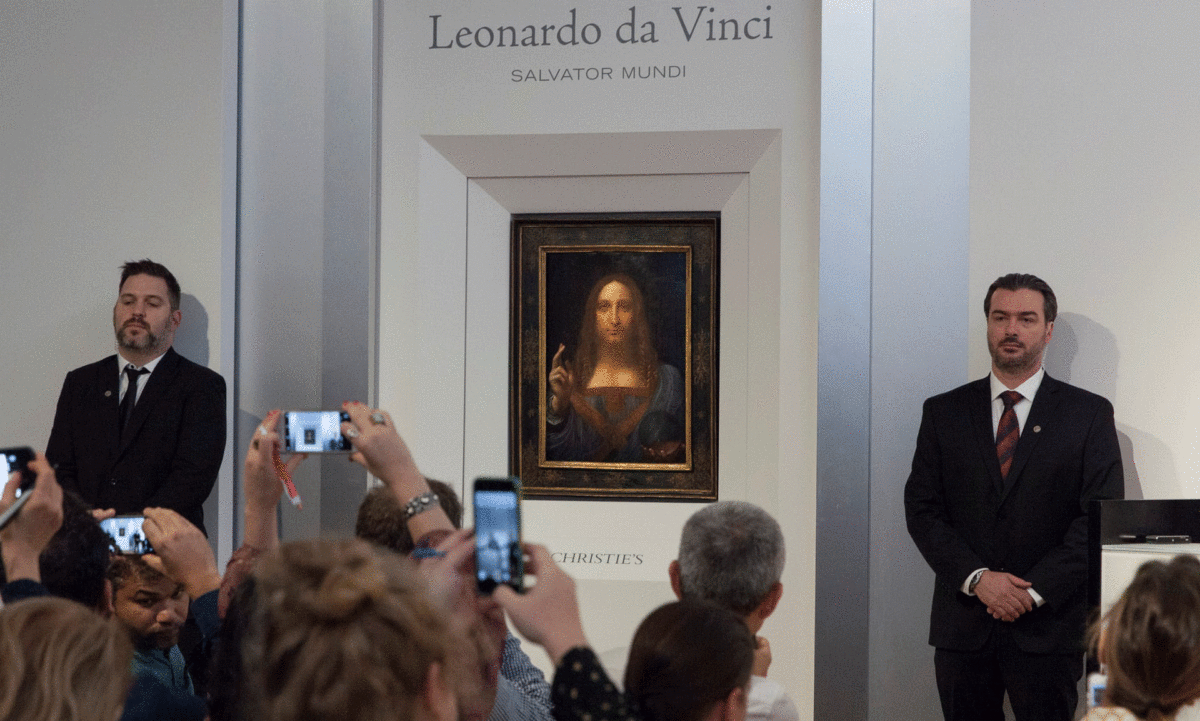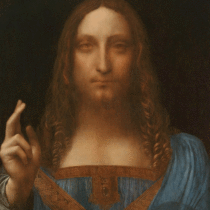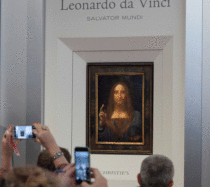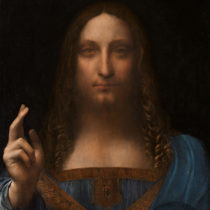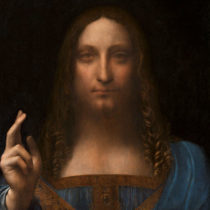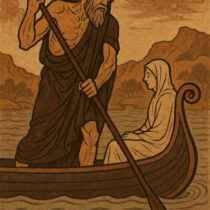Leonardo da Vinci’s work Salvator Mundi, unveiled in 2011 causing a worldwide sensation, will be auctioned at Christie’s. The work, one of the about 15 surviving paintings verified as da Vinci’s creations, was painted approximately 500 years ago but is still an influential piece to art.
The painting was included in an exhibition at the National Gallery, London, in 2011-12, among other Leonardo’s rare surviving paintings. But its journey to authentication was long and difficult. The work had been overpainted and was thought for a long time to be a copy. After it was auctioned in the USA, the item’s new owners proceeded with cleaning and restoring the painting, researching and documenting it.
The painting dates back to about 1500 and depicts Christ as Saviour of the World, in half length, holding a crystal orb in his left hand and raising his right hand in benediction. The painting bears features that are characteristic of Leonardo’s paintings, as for instance a haunting sense of mystery or the softly painted face, typical of Leonardo after 1500, as well as a sense of psychological movement. Above Christ’s left eye the marks that Leonardo made with the heel of his hand to soften the flesh are still visible.
Many preparatory sketches, copies and other items led to the assumption that the work had existed but it was presumed to have been destroyed. Leonardo was thought to have made the painting for the French royal family initially, but was later brought to England by Queen Henrietta Maria when she married Charles I in 1625. That is where it was recorded for the first time, in the inventory of the royal collection after the king’s execution, as having belonged to king Charles I. In 1763 the painting disappeared, until 1900 when it was purchased by Bernardino Luini, a follower of Leonardo, for the Cook Collection, Doughty House, Richmond. But by that time the face and hair of the figure had been repainted. In 1958 the painting was sold to auction and it disappeared again for another 50 years. Finally, it was purchased from an American estate.
In 2007 the restoration of the work was assigned to Dr Dianne Dwyer Modestini, Senior Research Fellow and Conservator of the Kress Program in Paintings Conservation at the Conservation Center of the Institute of Fine Arts, New York University. She documented the painting’s state and preservation and conservation process and finally concluded as to the painting’s authenticity as a work by Leonardo da Vinci. Many scholars were summoned to verify the assumption and after careful study and examination by an international panel a broad consensus was reached that Salvator Mundi was indeed painted by Leonardo da Vinci. Many studies that took place in the following years all concluded that the painting was an authentic da Vinci and variations of scholars’ opinions are only in relation to the item’s dating. But these too do not vary that much, since most of the experts place the painting in the later 1490s, at the end of the artist’s Milanese period, contemporary with The Last Supper, while others think it was painted in Florence slightly later, rendering it contemporary with the Mona Lisa.
Among evidence on the authenticity of the painting are numerous pentimenti, namely preliminary compositional ideas which were later changed by the artist in the finished painting that are not reflected in the copies found. These were revealed either during the conservation process or through infrared imaging. For instance, a first position for the thumb in the blessing hand, more upright than in the finished picture was uncovered and documented during conservation; or the repositioning of the palm with which Christ holds the orb, and of the jewelled ornament attached to his garment. Also, the pigments, media and technique used are consistent with the ones known to have been used by Leonardo.
The painting will be offered as a special lot in the Post-War and Contemporary Art Evening Sale on 15 November at Christie’s in New York, after an extended pre-sale exhibition from 28 October to 4 November. Christie’s will tour the painting before the exhibition and auction to key locations around the world. The masterpiece is estimated to be auctioned at $100m.
